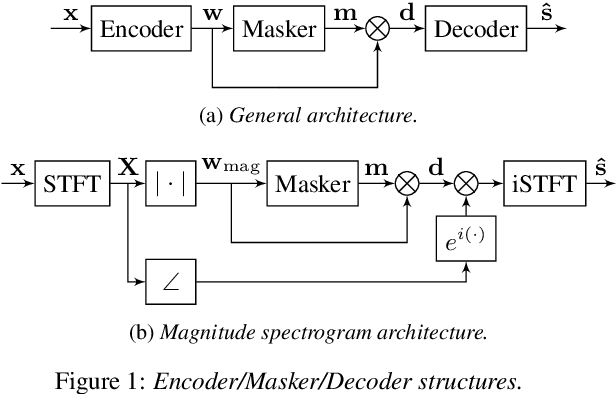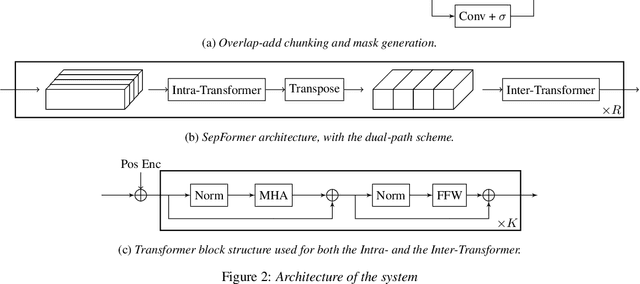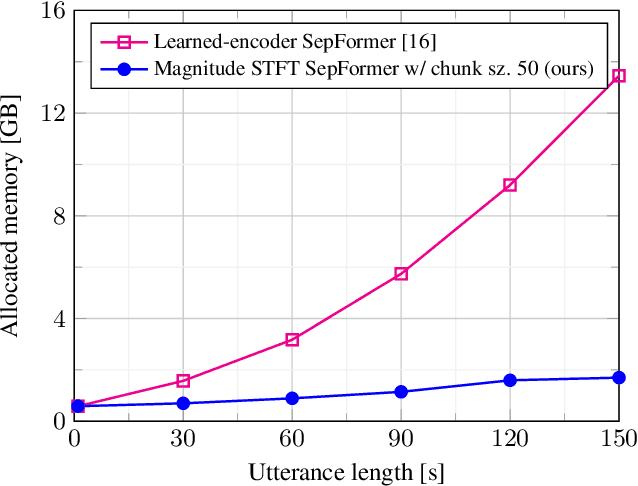Efficient Transformer-based Speech Enhancement Using Long Frames and STFT Magnitudes
Paper and Code
Jun 23, 2022



The SepFormer architecture shows very good results in speech separation. Like other learned-encoder models, it uses short frames, as they have been shown to obtain better performance in these cases. This results in a large number of frames at the input, which is problematic; since the SepFormer is transformer-based, its computational complexity drastically increases with longer sequences. In this paper, we employ the SepFormer in a speech enhancement task and show that by replacing the learned-encoder features with a magnitude short-time Fourier transform (STFT) representation, we can use long frames without compromising perceptual enhancement performance. We obtained equivalent quality and intelligibility evaluation scores while reducing the number of operations by a factor of approximately 8 for a 10-second utterance.
 Add to Chrome
Add to Chrome Add to Firefox
Add to Firefox Add to Edge
Add to Edge